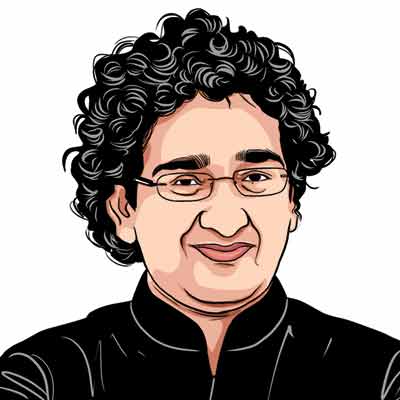Why didn’t P V Narasimha Rao, India’s PM between 1991 and 1996, dismiss the UP government before the fall of the Babri Masjid? Was he sleeping as the domes were struck? And was he even plotting the demolition? In his new book, Half Lion: How Narasimha Rao Transformed India, author Vinay Sitapati has some answers. Excerpts exclusively in The Sunday Express
6 December 1992. Narasimha Rao woke up at 7 a.m., later than usual since it was a Sunday. He read the day’s newspapers. The Times of India reported that more than ‘2.25 lakh VHP [Vishwa Hindu Parishad] volunteers are poised to’ perform prayers right next to the Babri Masjid.
The prime minister then spent thirty minutes walking on a specially installed treadmill. His personal physician, K. Srinath Reddy, arrived soon after. They chatted in Telugu and English, while Reddy took samples of Rao’s blood and urine.
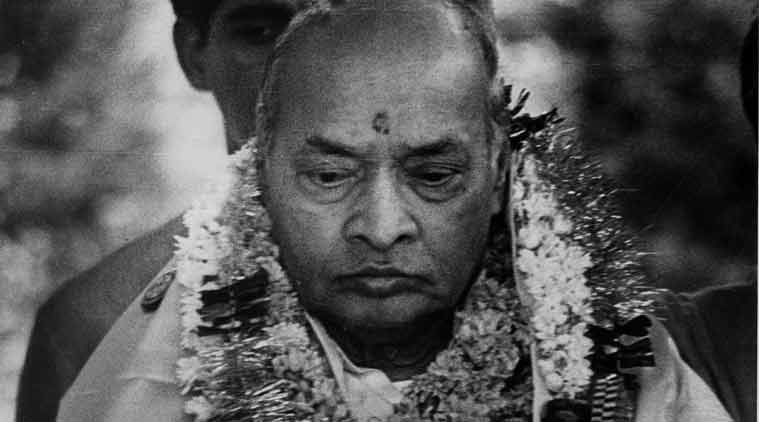 India’s PM between 1991 and 1996 P V Narasimha Rao
India’s PM between 1991 and 1996 P V Narasimha Rao
Since it was a Sunday, Reddy, a cardiologist at AIIMS hospital, spent the rest of the day at home with his family. At around noon, he switched on the television. Channels showed calm in Ayodhya—the three domes of Babri Masjid visible. At 12.20 p.m., Reddy saw live on television, the assault on the first dome by thousands of Hindu activists. By 1.55 p.m., the first dome had collapsed. Reddy watched, numb…
Almost immediately after, Reddy thought to himself, ‘The prime minister is a heart patient. How will he be feeling?’ A bypass surgery in 1990 had nearly caused Rao to retire from politics.

Reddy rushed to the prime minister’s office. Rao was standing when he entered, a gaggle of officials and politicians around him. They were all staring at the television. The third dome of the mosque had just fallen. ‘Why have you come now?’ Rao angrily asked Reddy. But the doctor insisted that his patient be examined…
‘As I expected, his heart was racing away… pulse was very fast… BP had risen. His face was glowering red, he was agitated.’ Dr Reddy gave Rao an extra dose of beta blocker, and left only when the PM had visibly calmed. Twenty-three years later, Reddy recalls Rao’s physical state: ‘I am fairly convinced as a doctor that his personal reaction to the demolition was one of honest agitation. It is not that of a person who would have planned it or been complicit in it.’
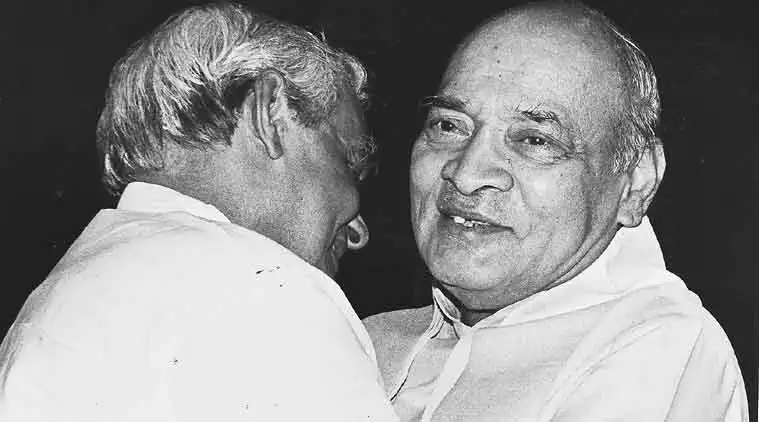 Rao was close to several BJP leaders, from Atal Bihari Vajpayee and Murli Manohar Joshi, to Bhairon Singh Shekhawat
Rao was close to several BJP leaders, from Atal Bihari Vajpayee and Murli Manohar Joshi, to Bhairon Singh Shekhawat
‘The body does not lie’…
… Though Rao decided not to impose Central rule in UP that July, he was confronted with the possibility that he would have to do so at short notice. He asked Madhav Godbole, his home secretary, to draw up a contingency plan to take over the mosque. Godbole, a Maharashtrian IAS officer, had a reputation for hard work, rectitude as well as acrimony. ‘When he speaks, it is as if God-bole [God speaks],’ a batchmate of his remembers. Godbole would later resign in a huff, and write a tell-all memoir criticizing Rao and other decision-makers for failing to prevent the demolition of Babri Masjid. But in July 1992, he was a bureaucrat who did as he was told. He sent Rao a secret contingency plan. The plan contained the modalities for Central forces to take over Babri Masjid. It specified that Article 356 had to be invoked, and talked about ‘Danger to security of RJB-BM’ structure for ‘a period of a few hours when the structure would be quite vulnerable. Ground realities preclude any fool-proof operational plan to avoid this.’
Rao did not go through with the plan in July…
The matter was now reaching boiling point and Rao personally monitored negotiations between Hindu and Muslim groups… Then on 30 October 1992, the VHP lobbed a bombshell. It declared that kar seva, or religious service, would be performed right next to the disputed structure on 6 December—on land that the UP government had taken over. The VHP promised that the mosque itself would be untouched, and the symbolic puja would be confined to the outer compound. But that meant around 100,000 Hindu kar sevaks in proximity to Babri Masjid on 6 December 1992.
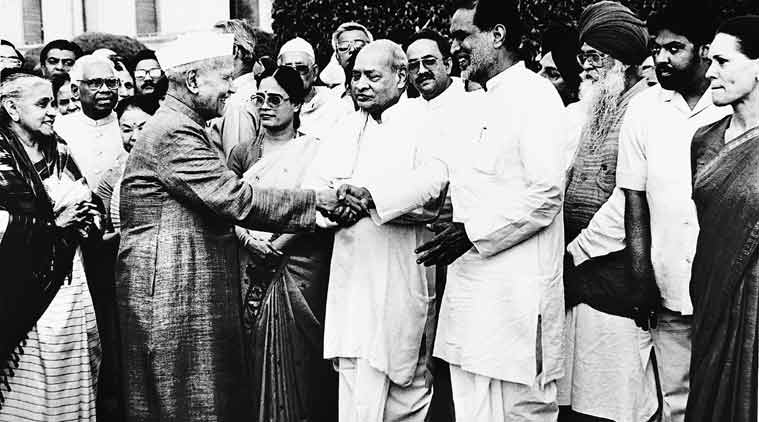 Rao with then president Shankar Dayal Sharma. The two shared a complicated relationship.
Rao with then president Shankar Dayal Sharma. The two shared a complicated relationship.
A few days later, Narasimha Rao asked Madhav Godbole to prepare yet another secret contingency plan to take over the mosque. On 4 November, Godbole replied, estimating that a large contingent of central forces would be required… The report made two points forcefully. First, the ‘imposition of president’s rule under article 356 of the constitution may be necessary just before the actual intervention’. Second, there would be a danger to the mosque while it was being taken over by Central forces…
For this reason, the home ministry advocated that if a decision be taken to impose President’s rule (the note was careful not to recommend it), it should be made well before 6 December. ‘[A] date prior to 24 November, 1992 may be considered.’ The note—which had never been made public before—made clear that Rao effectively had only until 24 November 1992 to impose Central rule in UP. Any takeover after that date would imperil the mosque. The prime minister had just twenty days to decide. ******… Rao immediately scheduled a meeting of the CCPA. He craftily invited the HRD minister Arjun Singh to join—so that he could not absolve himself of responsibility later.
At least five CCPA meetings were held that November. During these meetings, Rao repeatedly asked whether Article 356 could be legitimately invoked. In his memoirs, Madhav Godbole denies that there was any definite opinion voiced on Article 356 during discussions in the CCPA. However, his version is contested by two officials as well as one minister who attended the meetings—but who do not want to be named. They remember distinctly the consensus articulated in the meetings: that Article 356 applied only when ‘a situation has arisen’, not when it is anticipated. Naresh Chandra (then Cabinet secretary and later senior advisor of a special Ayodhya cell), one of the few officials willing to speak on record, adds: ‘The general feeling in government was that it would not be possible to justify recourse to Article 356 since it did not permit action in anticipation of a breakdown. All concerned, including P.C. Rao [the law secretary] shared this view.’
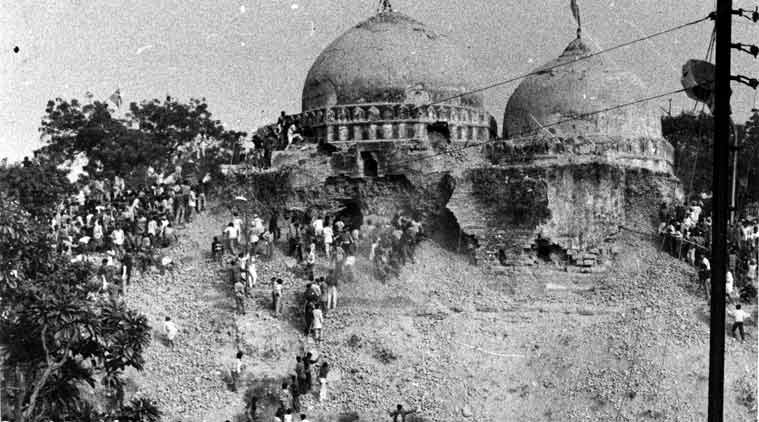 The demolition of the Babri Masjid
The demolition of the Babri Masjid
Arjun Singh later claimed that Rao dithered during those meetings, while he himself pushed for stronger action. This is not supported by the minutes of the CCPA, where not a single minister—not Manmohan Singh, not Sharad Pawar, and certainly not Arjun Singh—demanded the only ‘action’ constitutionally permissible: the dismissal of the Kalyan Singh government. Since minutes of the meetings do not always capture all that was discussed, this key fact has also been confirmed in interviews with bureaucrats and a politician present. Naresh Chandra says, ‘Members of the CCPA, while urging all steps to be taken to prevent damage to the building, did not propose or press on Rao for the imposition of the President’s rule.’
The clearest evidence that Rao’s Cabinet was unwilling to invoke Article 356 lies in the CCPA meetings around 20 November 1992. Narasimha Rao was not present, since he was travelling on an official visit to Senegal. One of the meetings was even held in the office of Arjun Singh. Godbole remembers the prime minister telling S.B. Chavan, Arjun Singh and Sharad Pawar that they could take a decision to impose Central rule in UP in his absence. They chose not to do so…
With his Cabinet and the Opposition unwilling to make the decision for him, Rao turned to the Supreme Court… The Supreme Court started hearings in late November. In the course of these hearings, Kalyan Singh—through his lawyers—swore to protect the mosque. The Supreme Court chose to believe him, and dismissed Rao’s request for receivership.
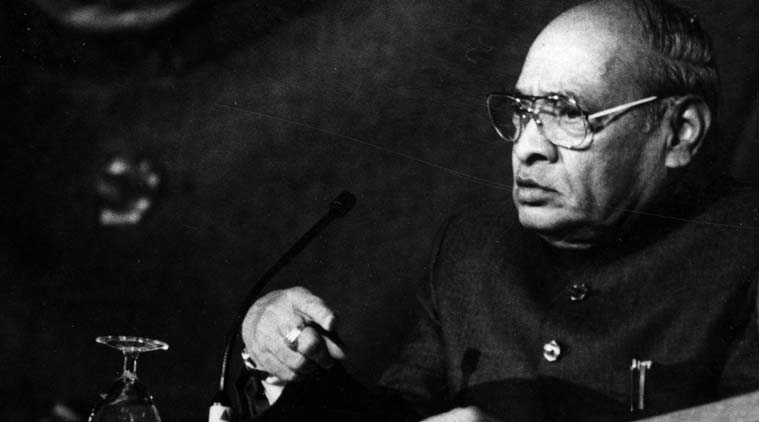 The clearest evidence that Rao’s Cabinet was unwilling to invoke Article 356 lies in the CCPA meetings around 20 November 1992.
The clearest evidence that Rao’s Cabinet was unwilling to invoke Article 356 lies in the CCPA meetings around 20 November 1992.
The intelligence bureau was Rao’s own detective force—to keep tabs on his Cabinet colleagues, on his enemies, and even on Sonia Gandhi. It is no surprise then that he asked the IB to send him reports from Ayodhya. The IB sent two reports that November. The first claimed that the mosque was under threat, but stopped short of recommending President’s rule. The second report, around early December, contained rumours that a VHP suicide squad was being trained to blow up the mosque on 6 December. This was an explosive claim, and the IB took great pains to stress that it was unverified. The lack of a clear message was typical of IB reports, a confidante of Rao says. ‘All IB reports present both arguments. If the mosque fell, they would say we predicted. If it didn’t, they would say we predicted.’
… Narasimha Rao realized he was being checkmated. Kalyan Singh had not made one false move through the whole of November. The Union Cabinet—including rivals Sharad Pawar and Arjun Singh—were worried about Kalyan Singh’s intentions, but had stopped short of recommending his dismissal. The Supreme Court, the state governor and law ministry officials, all seemed against Central rule.
Were Rao to invoke Article 356, the Supreme Court may well have held the decision to be unconstitutional since law and order had not yet broken down. As Rao told (his secretary) P.V.R.K. Prasad, ‘How could a democratically elected Government be dismissed as a precautionary measure without any valid reason? Would it be constitutional? Won’t we attract the odium of having resorted to a blatantly unconstitutional act?’ The BJP would have cried Central tyranny and moved a no-confidence motion in Parliament—as they eventually did after 6 December. There was no certainty that the non-BJP opposition would back Rao, or that his own party would support him.
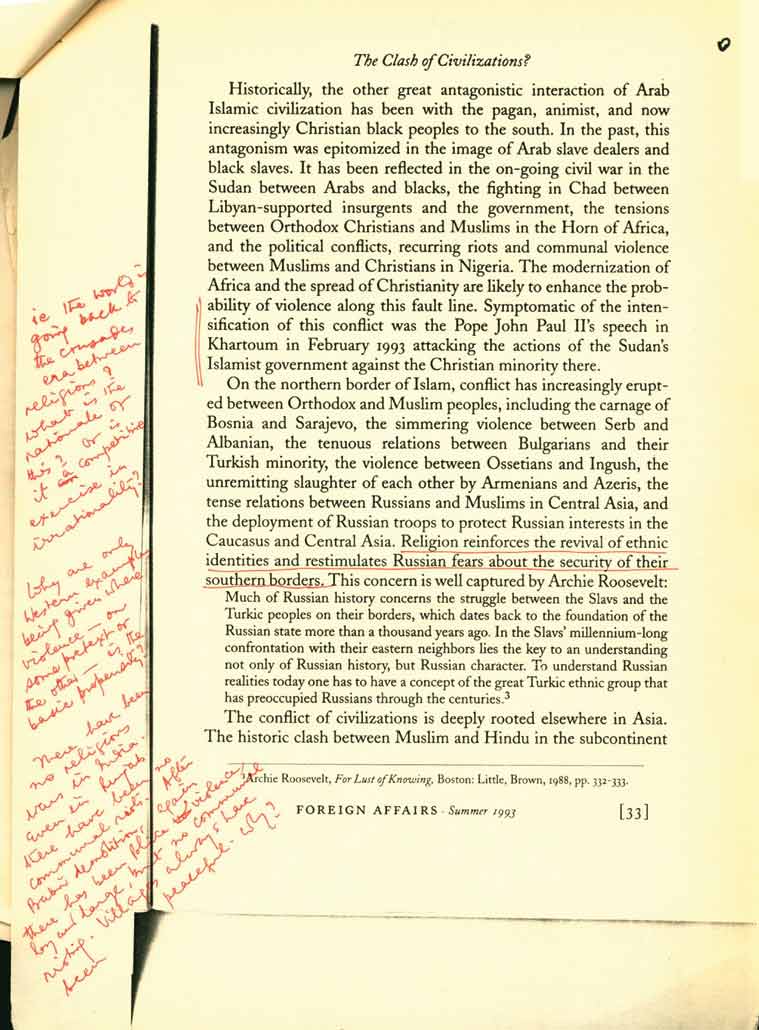 As he read Samuel P Huntington’s article, The Clash of Civilizations?, that appeared in the 1993 issue of Foreign Affairs, his mind must have gone back to the Babri demolition. His notes, scribbled along the margins, read: “There have been no religious wars in India. Even in Punjab, there have been no communal riots. After Babri demolition, again there has been police violence, by and large, but no communal rioting. Villages always have been peaceful. Why?”
As he read Samuel P Huntington’s article, The Clash of Civilizations?, that appeared in the 1993 issue of Foreign Affairs, his mind must have gone back to the Babri demolition. His notes, scribbled along the margins, read: “There have been no religious wars in India. Even in Punjab, there have been no communal riots. After Babri demolition, again there has been police violence, by and large, but no communal rioting. Villages always have been peaceful. Why?”
On the other hand, not imposing Central rule carried risks. There was a significant chance that Babri Masjid would fall on 6 December. Though Kalyan Singh had publicly and legally sworn to protect the mosque, he had previously shown he could not be trusted. If the mosque fell, Rao’s government might fall too.
Faced with these two options—both of which carried political risks—Rao decided not to impose Central rule, even though Godbole repeatedly asked him to operationalize the contingency plan. He decided, instead, to find a method to protect the mosque without imposing President’s rule. That way, his government and the mosque would both remain standing. What he proceeded to do has never been revealed before…
*****Starting in the middle of November 1992, prime minister Rao began similar backchannel talks with various Hindu groups, convincing them to protect the Babri mosque. While these groups had a somewhat common agenda, they were distinct organizations with their own leaders… Narasimha Rao—scholar of Hinduism—was confident he could convince them all…
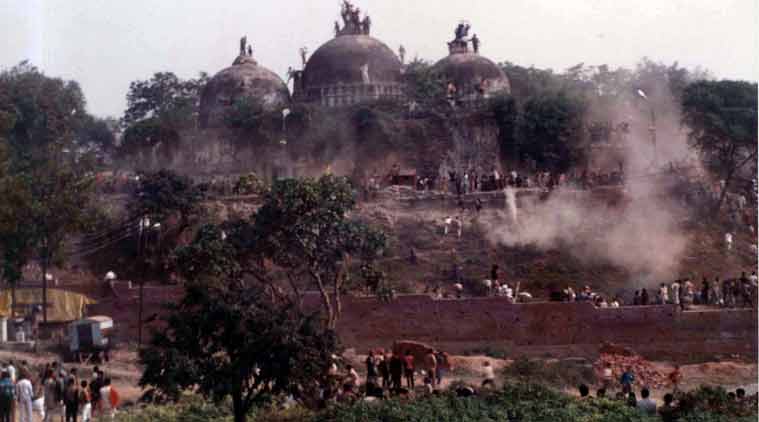 As the domes came under attack, several Congress leaders tried to get through to Rao, but failed.
As the domes came under attack, several Congress leaders tried to get through to Rao, but failed.
In each of these meetings, Rao would press for an assurance that the Babri mosque would be unharmed. He would even break into Sanskrit and quote Hindu scriptures to make his point. A senior intelligence bureau official assisting Rao remembers being present. ‘They were frauds, some of them,’ he says. ‘I told the PM that these are men of straw.’
‘I am a Brahmin,’ Rao replied to this official. ‘I know how to deal with these people.’
Since Rao had studied in Nagpur, knew Marathi, and had represented nearby Ramtek in Parliament, he knew many RSS leaders… Rao also negotiated in secret with the VHP, whose messianic leader Ashok Singhal was an architect of the Ayodhya movement…
Finally, Rao spent much of November 1992 in secret meetings with the leadership of the BJP… On 18 November 1992, Rao met Advani for a secret conversation. In preparation for the meeting, the home ministry sent him a memo, asking Rao to clarify with Advani the ‘plans for the resumption of Kar Seva at Ayodhya from 6.12.1992’. The memo asked that the BJP postpone either the kar seva until the Supreme Court resolved the feud, or issue a public statement saying that the proposed temple would not be built on the disputed land. Rao also met with Kalyan Singh that day, and once again the day after, on 19 November. A week later, he met the entire BJP leadership at one go.
P.V.R.K. Prasad remembers, ‘Around November 25th, Advani, Vajpayee and Kalyan Singh visited house number five on Race Course Road. The meeting was top secret. I was in the room then. They assured him the mosque would be intact.’
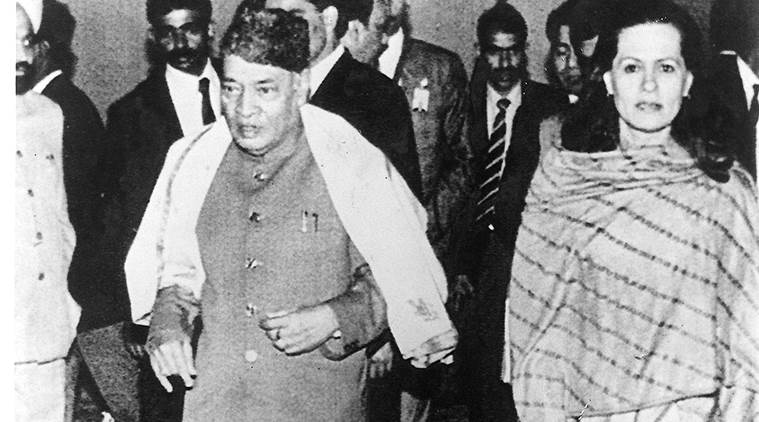 Prime Minster PV Narasimha Rao with Sonia Gandhi at Hyderabad house. Express archive photo
Prime Minster PV Narasimha Rao with Sonia Gandhi at Hyderabad house. Express archive photo
… The contents of Rao’s meetings—with a constellation of religious and political Hindu leaders—have remained undisclosed until now. They are not recorded in Rao’s appointment diary. He did not even mention them in his book on Ayodhya, published after his death. However, the fact that at least some meetings between the prime minister and Hindu groups occurred in November 1992 has made it to the press. They have been interpreted as proof that Rao had, what the legal scholar A.G. Noorani calls, a tacit ‘understanding’ with the BJP. The truth, unearthed here, reveals the opposite. Far from secretly conniving to demolish the mosque, Rao was, in fact, secretly conniving to protect it.
They also demonstrate his miscalculation. ‘All these people who were consulted had a heightened sense of their importance. Rao misjudged that,’ Naresh Chandra says. ‘The people who were really creating the problem were the Bajrang Dal and Shiv Sena,’ a home ministry official adds. But these were the two groups that Rao did not reach out to, in the belief that they could be controlled by his friends in the BJP, RSS and to a lesser extent, the VHP…
*****The 24 November deadline before which Central rule in UP could be imposed without damaging the mosque came and went. In the meantime, the crowd around the mosque had increased, from 500 on 25 November 1992 to 175,000 on 30 November and over two lakh by 5 December. An army takeover at this point, in the midst of a hostile state government and crowd, would threaten human life as well as the mosque. The prime minister’s options had severely reduced…
Around 4 December, two days to go, Rao wrote a little note to himself on the pros and cons of imposing President’s rule. This was a clarification of his thoughts to his own self, and has remained untouched in his private archives since. The note, written in red ink and his small, neat script, is titled, ‘reasons for and against trusting the government of uttar pradesh’. In reasons for trusting, Rao wrote on the left column, ‘CM gives assurance to NIC and SC’ and ‘Statements of local VHP leaders that kar seva will only be symbolic’. In reasons against trusting Kalyan Singh, on the right column in the page, Rao put down, ‘Kalyan Singh has consistently shown its disinclination to use force against religious leaders and kar sevaks’, ‘In his letter on november 17th, 1992, Kalyan Singh rejected central supervision over security forces’, ‘Intelligence report [that] mentioned, in passing, and using unconfirmed reports, that “balidani jathhas” were present in Ayodhya who were trained for the demolition of the structure’, and ‘Contra to state government assurance, MM Joshi and Advani increasing mobilisation for december 6th’.
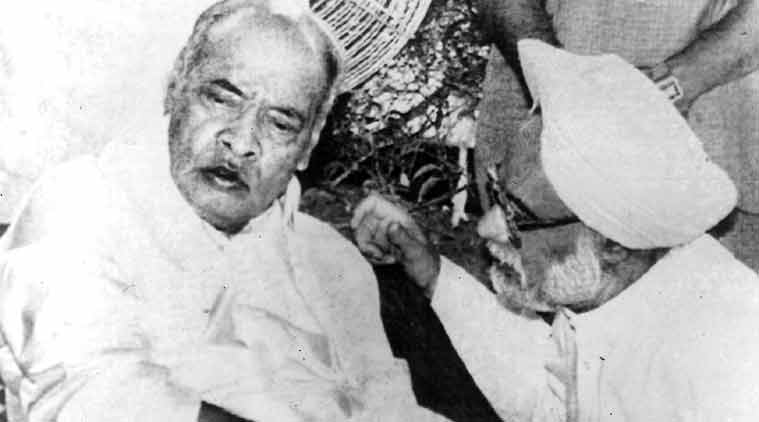 P V Narasimha Rao with Manmohan Singh
P V Narasimha Rao with Manmohan Singh
Narasimha Rao must have spent the day considering his note, then reconsidering it. On 5 December 1992, his schedule shows he had a normal day. He met with (his astrologer) N.K. Sharma at 10 a.m. ‘I had some information that the mosque might fall,’ Sharma claims. ‘I told the prime minister about threats to the mosque, and also the games that Arjun Singh was playing. I was keeping tabs on him.’
… Rao returned home, where his cook Rajaiah made him a frugal meal in bungalow number three. He then retired to his room, sat on his bed, laptop perched on his stomach, and punched away while strains of Hindustani music played in the background. He went to sleep, having been convinced by the arguments on the left column of his note. He decided to trust Kalyan Singh.
On the morning of 6 December 1992, Rao met Dr Srinath Reddy. He also met with his astrologer… By 11.30 a.m., a large but peaceful crowd was being addressed by leaders of the BJP and VHP. Between 11.45 a.m. and 12 noon, the chief of police and administration for Ayodhya walked around the perimeter of the Babri Masjid. Everything was in order.
At about noon, a teenaged kar sevak jumped across the boundary and vaulted on top of the mosque dome. He was not stopped by any one of the policemen present. That first kar sevak was joined by thousands of others, who began chipping away at the domes. There was a galaxy of BJP leaders present who had spent the past year whipping up passion on the issue. L.K. Advani made requests on the public address system for the kar sevaks to come down. He was ignored.
 The VHP promised that the mosque itself would be untouched, and the symbolic puja would be confined to the outer compound. But that meant around 100,000 Hindu kar sevaks in proximity to Babri Masjid on 6 December 1992.
The VHP promised that the mosque itself would be untouched, and the symbolic puja would be confined to the outer compound. But that meant around 100,000 Hindu kar sevaks in proximity to Babri Masjid on 6 December 1992.
Rao’s home telephone began to ring. ‘I called up Kumaramangalam immediately,’ Jairam Ramesh remembers. ‘Kumaramangalam said that Rao was not to be reached.’ Another Congressman called up the PM’s house.
‘Khandekar picked up. He told me that the prime minister was in his room. He did not want to be disturbed.’ Arjun Singh later claimed that he had tried to reach Rao at his house, but was told ‘. . . he has locked himself in his room and our directions are not to disturb him under any circumstances.’ Many other politicians called, none of whom could get through. This inability to reach Rao led to the rumour that the prime minister was sleeping while Babri was under attack… Is there truth to these allegations?
That Rao was sleeping is verifiably false. From 12.15 p.m., when the first dome was under attack, Rao was on the phone with several of his officials. Naresh Chandra and Madhav Godbole were both in the home secretary’s office, monitoring developments. ‘The prime minister was being informed on a regular basis,’ Chandra says. The Cabinet secretary S. Rajgopal was also present. In his memoirs, Godbole adds that during this time period, V.G. Vaidya had ‘already spoken to the PM’.
Around 2 p.m., Rao was joined by a host of officials. Two of them, P.V.R.K. Prasad and the law secretary, P.C. Rao, later gave a press conference confirming this. P.C. Rao even listed other officials who could vouch for the fact that Rao was awake and monitoring the situation.
One might still wonder why Narasimha Rao refused to take calls from some politicians between 12 and 2 p.m.. Even though he was awake and on the phone with officials, why did he remain within his locked room? A friend provides the answer. ‘I was with him in the room throughout,’ this person says. He was ‘normal until 12 [noon]. As he saw [what was happening] on TV . . . for a few minutes he couldn’t talk. He was not speaking. He trusted all those people very much.’… ******
 P V Narshima Rao Illustration: Subrata Dhar
P V Narshima Rao Illustration: Subrata Dhar
There is no question that Rao made the wrong decision on Babri Masjid. He should have imposed President’s rule between 1 November and 24 November 1992. This decision would have been constitutionally suspect and politically fraught. The Supreme Court might have held the move illegal; the BJP would surely have brought a no-confidence motion in Parliament, Rao’s rivals in the Congress would have blamed him, and the prime minister might have lost his job. But it was a risk that should have been taken. The fall of Babri Masjid was an event that shook the foundations of independent India like few others. Many Indians woke up to a different country on 7 December, and still blame the prime minister of the day. History has judged Narasimha Rao harshly.
But this is a judgement made with the benefit of hindsight, after knowing how events unfolded on 6 December. Knowing only what Rao did before 6 December, what can we fairly accuse him of?
To accuse him of plotting the demolition is a lie, and will remain one until contrary evidence emerges—which it has not in the twenty-four years since. Not only is there no hard proof that Rao aided the conspiracy, there is plenty to indicate that he tried to protect the mosque through secret talks with Hindu leaders.
To accuse Rao of indecision is also untrue. As we saw on the economy, Narasimha Rao could speedily make up his mind if he felt the right decision also made for good politics. In the lead-up to 6 December, all options carried political risks. Faced with such difficult choices, Rao did decide. By mid-November 1992, Rao had weighed the pros and cons and decided that he would not take over Uttar Pradesh. He did this because no one was willing to take a stand and push for Central rule—not his Cabinet colleagues in the Congress, not his law officers, not the state governor, not even the Supreme Court…
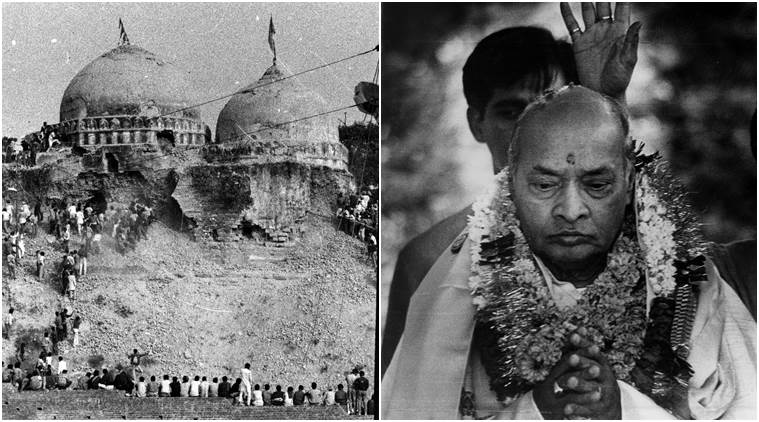 By mid-November 1992, Rao had weighed the pros and cons and decided that he would not take over Uttar Pradesh.
By mid-November 1992, Rao had weighed the pros and cons and decided that he would not take over Uttar Pradesh.
What then can Rao be legitimately criticized for?
His error was that, against the judgement of his officials (and, it must be admitted, Arjun Singh), Rao reposed his faith in members of the VHP, BJP, RSS and sundry Hindu gurus. To be fair to Rao, he began these informal talks only when he realized he had few formal options…
In the final analysis, therefore, the enduring political victim of the Babri demolition was Narasimha Rao himself. Some of this was his doing, much of it deliberate defamation by his own party. As Narasimha Rao put it so presciently in his book on the events of 6 December, ‘…those responsible for the vandalism had got not only the Babri Masjid demolished, but along with the Babri Masjid it was me whom they were trying to demolish.’
(The footnotes in the book have been removed from these excerpts)
